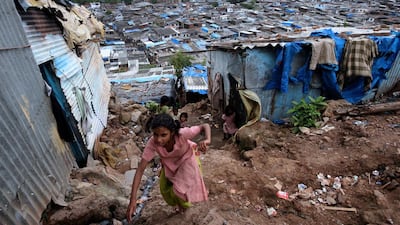From the beginning of this month, the UK ended financial aid to India. For years, India was the largest beneficiary of the UK’s international aid programme.
Debate has long raged in the UK that India, with its expansive space and defence programmes, does not properly qualify for foreign aid. Britain’s government made the cogent case that cutting spending domestically, while giving to a country that has more billionaires than the UK and that itself is an aid giver to other deprived nations, is not justified.
The decision to stop financial aid was taken in 2012. Moreover, in that same year, India’s then finance minister Pranab Mukherjee decried British aid by referring to it as “a peanut” in the country’s total development spend.
Aid activists, however, point to an India that is in a crisis of poverty and one that aid givers should not exclude. A quarter of child deaths globally occur in India. A University of Oxford 2015 report cites one quarter of the 1.6 billion poor people in the world live in India. The poverty of eight Indian states equals that of 25 African nations.
As the end of 2015 approached, Indian TV channels mostly belted out chart-topping Bollywood numbers together with other light entertainment. However, Zee News heart-wrenchingly chronicled a family who were eating bread made from grass together with a soup prepared by boiling leaves.
Malnourished children spoke about this being their daily diet. Sitting with these children, the presenter poignantly spoke to camera: “This is how most of India lives. This is what the future of India is growing up on. Even basic food security is not yet a reality in India.”
The family involved were farmers. Indian farmers have been in crisis in recent years with a record number committing suicide due to failed crops and heavy debts. According to a World Bank report of 2013, 50 per cent of Indians are employed in the agricultural sector. Such desperation points to an India in crisis.
On the one hand, poverty is staggering, while on the other, India’s most popular temples house trillions of dollars worth of donations from devotees. Leave aside the billions lost to the exchequer by corruption, rampant tax evasion, business licence allocation scams and the soaring wealth of its billionaires. The riches of Indian temples, in themselves, are reported to exceed the affluence of even the Vatican.
Recently, treasures worth billions of dirhams were found in one temple alone – the Padmanabhaswamy temple in Kerala.
India’s temples did not feature in the UK’s political rhetoric against aid to India.
Leave alone the international community, even most Indians are unaware of the extent of the bewildering riches in temples.
Temple wealth could be circulated in the economy to assist poverty relief measures. But the prevalent thinking in India is that this would be an affront to the sentiments of the devotees who have made these offerings and would be a disincentive to future donations.
The mindset that generates this thought process must be challenged. It is time to bring this argument into popular discourse.
Priya Virmani is a commentator on politics and economics based in London

